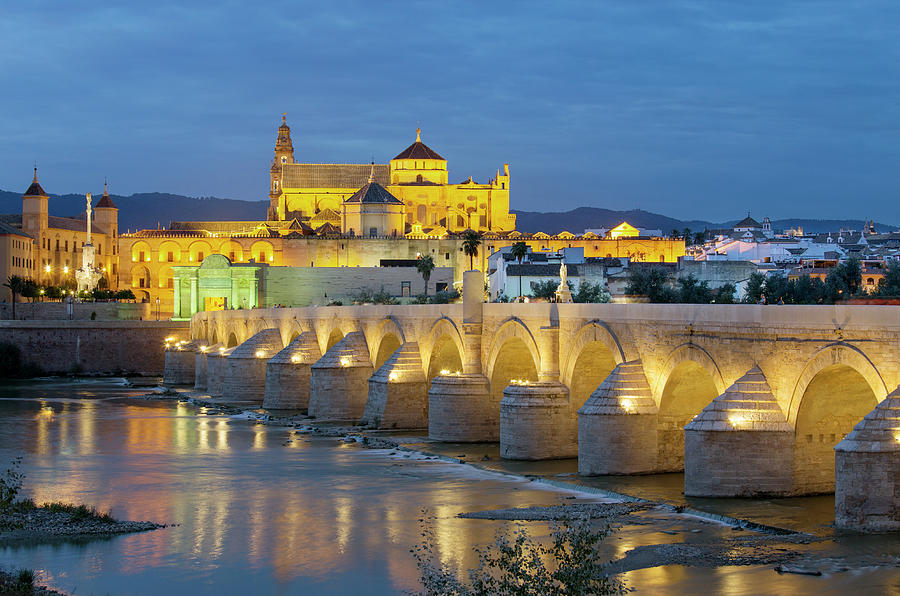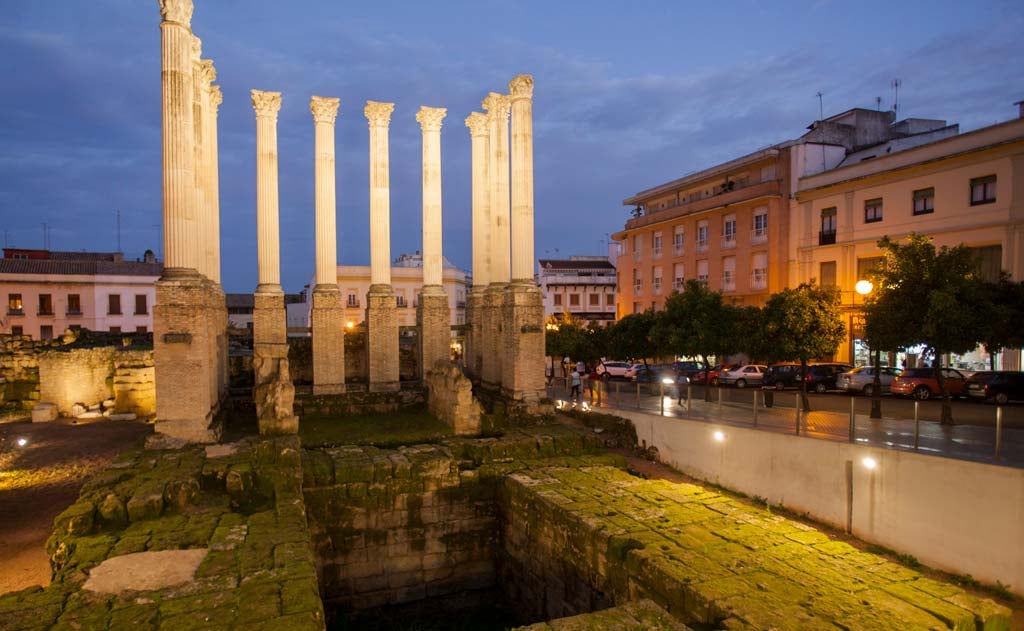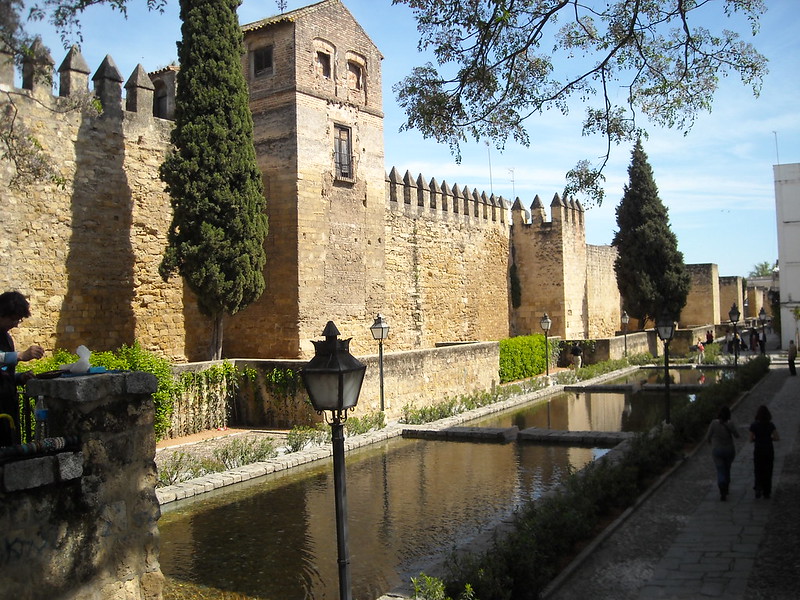How often do you think about the Roman Empire? The people of Cordoba Spain probably think about it every day. Cordoba was settled by the Romans in 152 B.C. and quickly became a bustling capital city in the Roman Baetica Province. When the Moors took over, it became their capital city as well, proving just how strategic the city was. Many ruins and artifacts can be seen throughout the city from both the Roman Empire and Al-Andalus. Some of the Roman structures that still stand in the city are the famous Roman bridge, the walls of the original city, and a ruined temple that was only rediscovered in 1950. If you want to see Roman influence in Spain, then Cordoba should definitely be on your bucket list.
The Roman Bridge of Cordoba

The bridge was constructed over the Guadalquivir River and was used as a strategic site for the Roman Legions when the native Iberians were rebelling. It was then reconstructed by the Moors as it was falling apart from years of neglect. The Moors once again used the bridge as a strategic battle site when defending the city against Christian invaders. The bridge consists of a total of 16 arches, but over the many years of renovations, only 2 of the original arches remain. The United Nations Educational, Scientific and Cultural Organization (UNESCO) officially listed the Roman Bridge as a World Heritage Site in 1984. HBO’s Game of Thrones also featured the bridge in Season 5, episode 3. The bridge sits right next to the world-famous Mosque Cathedral of Cordoba!
For more information about the bridge, you can go to any of these links:
https://www.turismodecordoba.org/puente-romano
https://www.ancient-origins.net/ancient-places-europe/roman-bridge-cordoba-0013820
Roman Temple

The only known Roman temple in the city of Cordoba sits right next to the town hall on a street named Calle Claudio Marcelo in the middle of a shopping district. The temple was dedicated to the Cult of the Emperor. More information about the Roman practices of worshiping emperors as deities can be found in, Professor Henry Fairfield Burtnon’s The Worship of The Roman Emperors. Today there’s only 11 pillars and a few marble stones remaining, taking up a relatively small footprint. There are also some pieces of the temple on display at the Archeological Museum in Madrid, and if you keep your eyes peeled, you might be able to see some scattered all across Cordoba. This piece of history is a constant reminder of just how influential the Roman Empire was to Cordoba.
To read more about the temple, these are some great links to read up on:
https://www.mezquitadecordoba.org/en/monuments/roman-temple.html
https://www.turismodecordoba.org/roman-temple
The Walls of Cordoba

In ancient times, walls were a near perfect and essential part of defense. They were able to keep unwanted visitors out of the city and they acted as watch towers to spot any enemies that may be approaching. The wall that the Romans built around Cordoba is a popular draw for anyone who wants to see a piece of history. There are walls around the entirety of the old Roman city, the Moors and then the Christian rulers extended the wall to surround their editions. The Roman walls were built shortly after the city was destroyed when Julius Ceasar attacked Pompeii during the civil war. In fact, Cordoba is home to probably the best-preserved sections of Roman walls anywhere in the old empire. Just like the nearby bridge, UNESCO has labeled the wall as yet another World Heritage Site.
Once again, to read more about the wall, you can go to:
https://www.infocordoba.com/spain/andalusia/cordoba/city_walls.htm
https://www.romeartlover.it/Cordoba2.html
https://travel.sygic.com/en/poi/cordoba-city-walls-poi:44001
https://www.thetravel.com/the-roman-walls-of-lugo-are-the-best-preserved/
Cordoba is a must visit for anyone who needs to get their Roman Empire fix, there’s just so much history that has been beautifully preserved. This blog only shows a fraction of interesting sites to visit and learn about during your time in the city.
